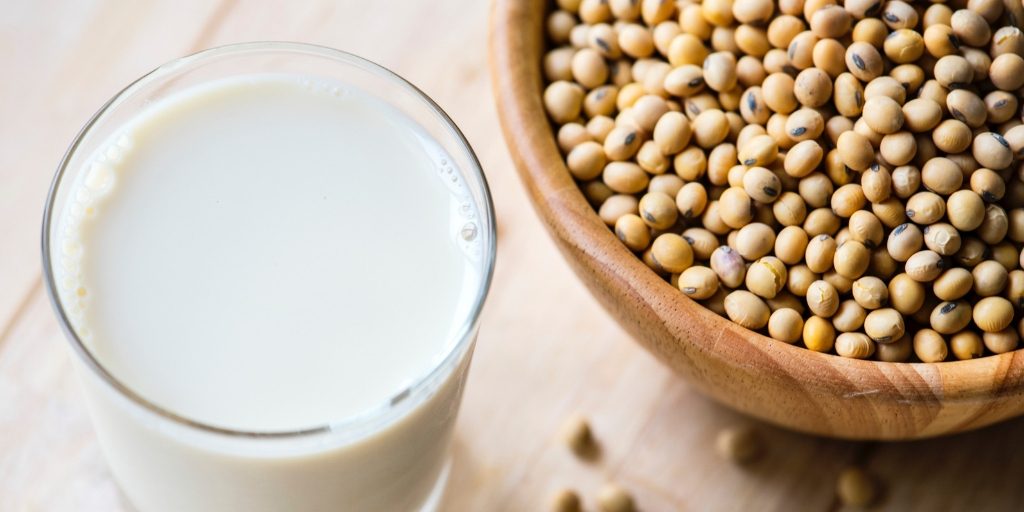
Soy is one of the top 8 allergens responsible for the most allergic reactions. It can be ingested in a variety of forms: as whole soybeans, oil, or flour. It is also used in food products as an emulsifier, a texturizer, or a protein filler. Because of its high protein content, it’s used in nutritional products (protein powders, for example) and vegetarian products (meat substitutes, for example).
Since food allergies are reactions to the proteins in a given food, it was originally believed that soybean oil and soy lecithin are safe for soy-allergic individuals to consume. Now, it is evident that soy protein may occur in these products if they are not very pure. Approach these with caution as they can cause symptoms as well.
Soy Allergy Symptoms
- Tingling in the mouth
• Hives, itching, or soy allergy rash - Skin redness (flushing)
• Swelling of the lips, face, tongue and throat, or other body parts
• Wheezing or breathing difficulty
• Abdominal pain, diarrhea, nausea or vomiting - Allergy-induced anaphylaxis
Symptoms of a soy allergy can be very severe. Soy is often a hidden allergen and very difficult to avoid in your diet. Below, NY Allergy & Sinus Centers provides a soy allergy food list to help you avoid an allergic reaction.
Soy Allergy Foods to Avoid
| Edamame | Miso | Natto | Shoyu (soy sauce) |
| Soya | Soy albumin | Soybeans | Soybean Curd |
| Soybean Oil | Soy fiber | Soy milk | Soy lecithin |
| Soy nuts | Plant protein | Soy sprouts | Tamari |
| Tofu | Some baby formulas | Salad dressings | Breakfast bars |
Foods That Could Contain Soy
| Asian Cuisine | Baked goods | Cereal | Cheese |
| Condiments | Butter substitutes | Gravy | Pasta |
| Meal replacements | Crackers & chips | Candy | Canned meat |
| Hot dogs | Yogurt | Cooking oil | Flour |
| Ice cream | Broth | Vegetable products | Starch |
Legumes
There is evidence that cross-reactions between soy and other legumes are possible, though rarely symptomatic. Therefore, if your allergy tests have shown sensitivity to one legume, you may not have to eliminate all legumes from your diet. You should work with your New York allergy doctor to develop dietary restrictions that are healthy and safe for you.
List Of Legumes
| Acacia | Aduki beans | Alfalfa | Black turtle bean |
| Black-eyed bean | Carob | Cassia | Chick pea |
| Cowpea | Fava bean | Fenugreek | Great Northern Bean |
| Green bean | Green peas | Kidney bean | Lentils |
| Lima bean | Peanuts | Pinto bean | Tamarind |
Soy Allergy Diagnosis
A soy allergy can be diagnosed using soy allergy testing such as a skin prick test. Your allergist will prick your skin with a small amount of the allergen and watch for a reaction. A positive test will result in welts on your skin within 15 minutes. If the results are inconclusive, a doctor might order a food challenge where you will eat a small amount of soy to see if it evokes a soy allergy reaction.
Soy Allergy Treatment
Since there aren’t any current treatments for food allergies, it’s necessary to avoid the food you’re allergic to. Thoroughly read food labels and beware of hidden names for soy, such as textured vegetable protein. It may be helpful to carry an allergy card to restaurants so the staff is aware of your allergy.
In the event of a severe allergic reaction to soy, you need to have an epinephrine auto-injector. It is the only medication used to treat anaphylaxis. Epinephrine can only be prescribed by a doctor; so if you’re diagnosed with a soy allergy, ask about your risks of anaphylaxis and if an EpiPen is necessary for your condition.
For more information about soy allergies, call NYASC today at 212-686-6321. We have the latest allergy testing and treatments, and we offer convenient clinics throughout NYC: Murray Hill, Midtown, Upper East Side, Upper West Side, Chelsea, and Queens. Our NY allergy specialists can also help you find relief for your nasal and sinus problems, asthma, ear, nose, and throat (ENT) symptoms, skin conditions, and respiratory allergies. Book your appointment now!
Soy Allergy Frequently Asked Questions
Are There Any Alternatives to Tofu for Vegetarians?
Seitan is an alternative to tofu is you’re allergic to soy. It is made with gluten and contains a high amount of protein.
Can I Be Allergic to Soy?
Anyone can be allergic to soy but individuals with a peanut allergy or milk allergy are more likely to be allergic to soy.
How Is Soy Allergy Diagnosed?
Our allergy specialists can diagnose your soy allergy with allergy testing.
How Is Soy Allergy Treated?
An allergist can treat your symptoms related to soy allergy.
Is Mung Bean Soy?
Mung beans are considered legumes. If you are allergic to soy, you may be allergic to mung beans as well because of cross-reactivity.
Is Soy Allergy Curable?
No, soy allergy is not curable. If you suffer from a soy allergy or intolerance, you’ll need to avoid soy entirely.
What is Soy Lecithin?
Soy lecithin is a food additive that is used as an emulsifier, or lubricant in food. It is generally used in small amounts, but highly sensitive patients can still react to it.
What Other Protein Can I Use As An Alternative to Soy Protein?
If you’re allergic to soy, brown rice protein can supplement your diet.
Why Are People Allergic to Soy?
There are more than 20 possible allergy-causing proteins in soybeans.

